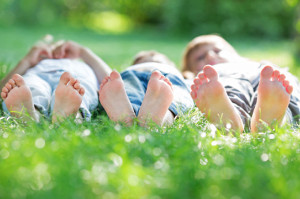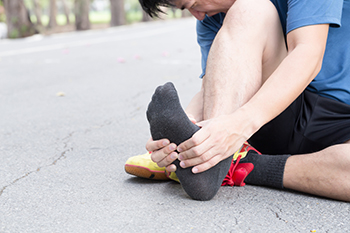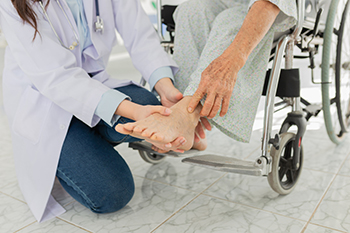
Corns are thickened areas of skin that can occur on the feet due to friction or pressure. They develop naturally to help protect the skin underneath them. They are commonly seen on the tops and sides of the toes and the balls of the feet. Corns can be hard and dry or soft and mushy. Corns can be caused by arthritis or poorly fitting shoes. Home treatment of corns usually consists of soaking the affected foot in warm water until the skin softens, and then gently filing the corn down with a pumice stone. One needs to use care when with this process and be sure to not press too hard to avoid bleeding and possible infection. Adding a donut-shaped adhesive pad around the corn can help the corn from touching the inside of the shoe. Routine foot care, including moisturizing the feet and keeping the toenails trimmed properly, are good preventative measures. If you are not sure why you have developed a corn, it becomes painful, or is not healing properly, see a podiatrist for treatment.
Corns can make walking very painful and should be treated immediately. If you have questions regarding your feet and ankles, contact one of our podiatrists of Foot and Ankle Clinics, PA. Our doctors will treat your foot and ankle needs.
Corns: What Are They? And How Do You Get Rid of Them?
Corns are thickened areas on the skin that can become painful. They are caused by excessive pressure and friction on the skin. Corns press into the deeper layers of the skin and are usually round in shape.
Ways to Prevent Corns
There are many ways to get rid of painful corns such as:
- Wearing properly fitting shoes that have been measured by a professional
- Wearing shoes that are not sharply pointed or have high heels
- Wearing only shoes that offer support
Treating Corns
Although most corns slowly disappear when the friction or pressure stops, this isn’t always the case. Consult with your podiatrist to determine the best treatment option for your case of corns.
If you have any questions please feel free to contact our offices located in Woodbury, West St. Paul, and Edina, MN . We offer the newest diagnostic and treatment technologies for all your foot and ankle needs.





